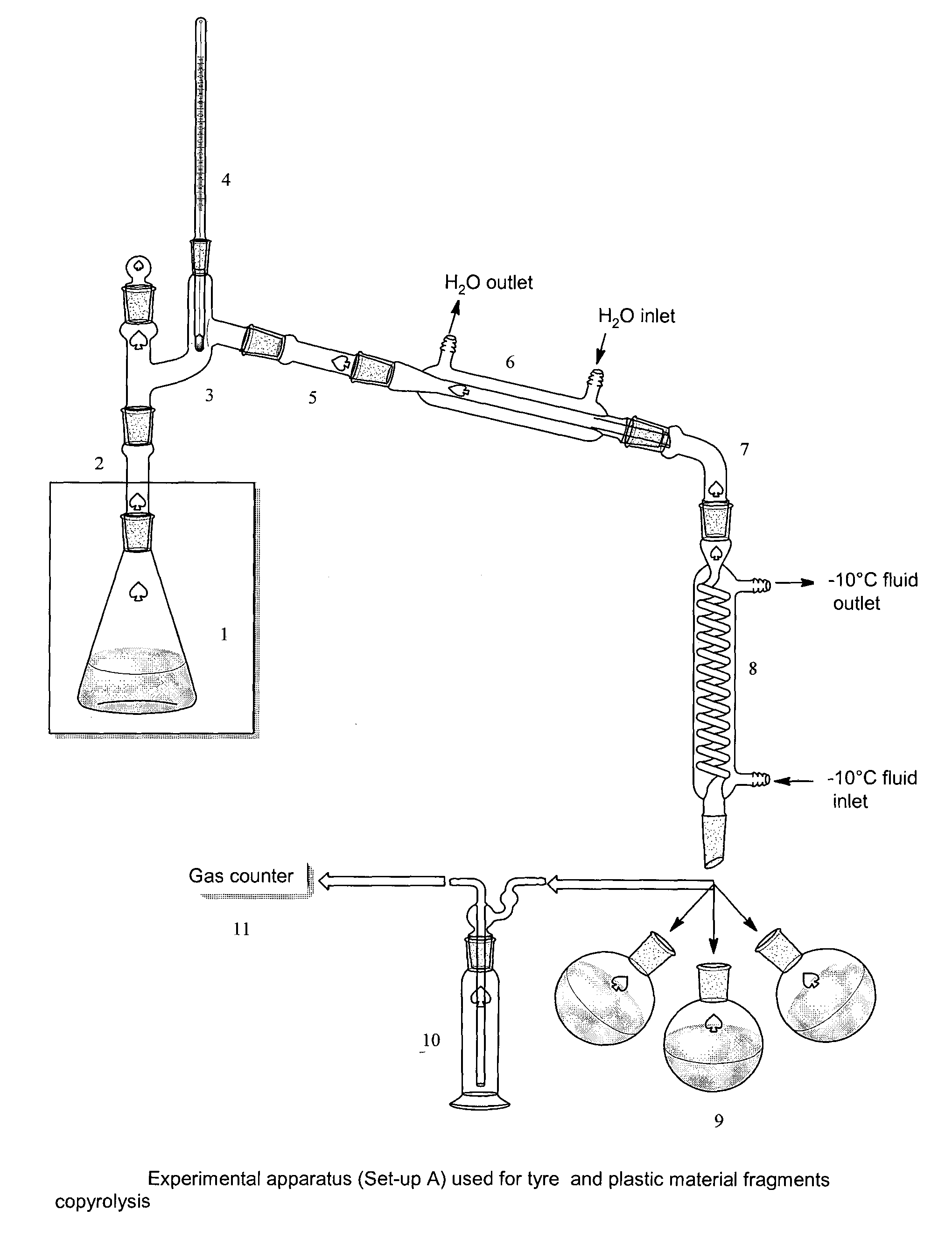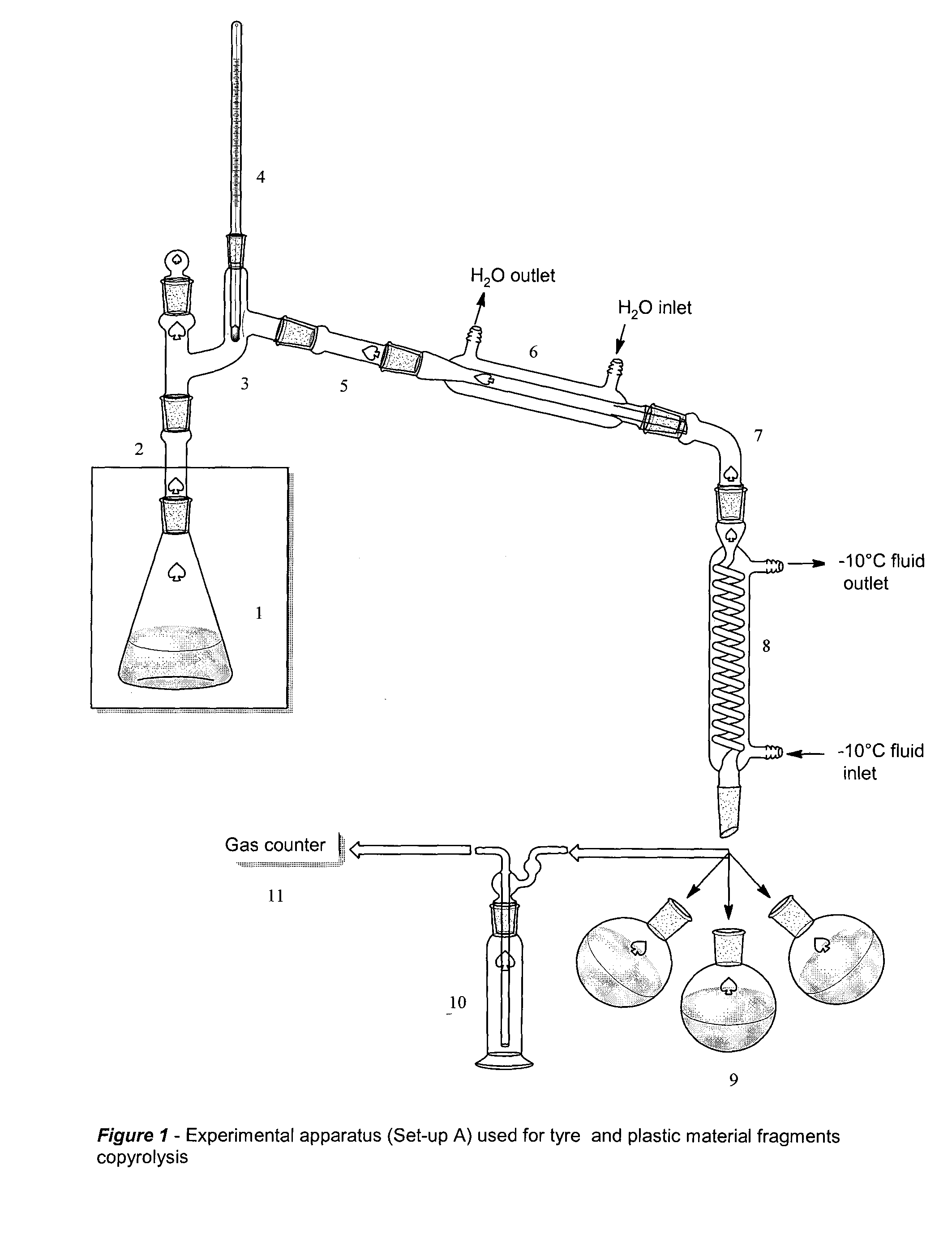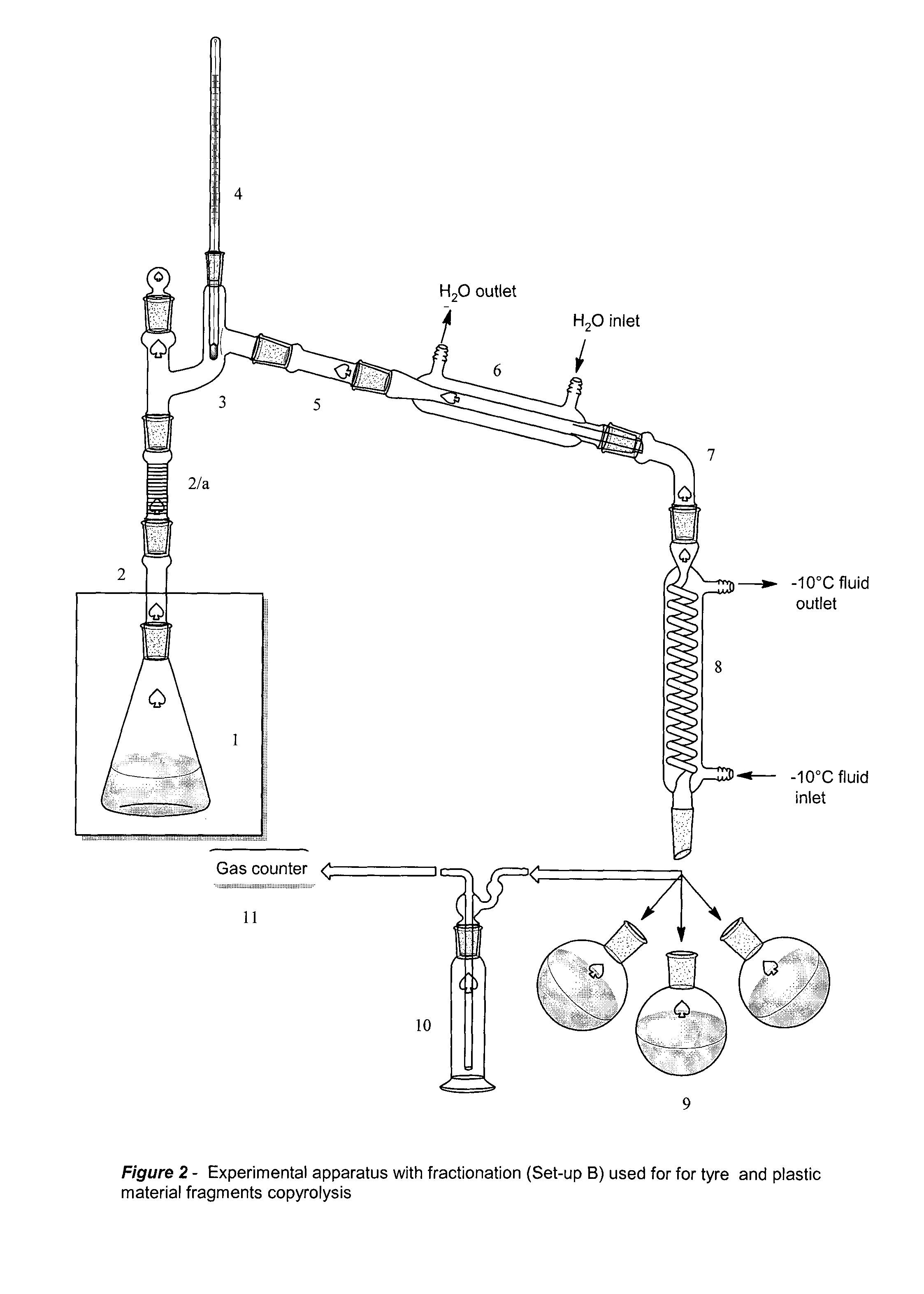Production of hydrocarbons from copyrolysis of plastic and tyre material with microwave heating
a technology of plastic and tyre material, which is applied in the field of plastic material recycling, can solve the problems of large waste, large environmental impact, and variable waste composition, and achieve the effects of reducing the number of waste, reducing the quantity of waste, and increasing the cost of production
- Summary
- Abstract
- Description
- Claims
- Application Information
AI Technical Summary
Benefits of technology
Problems solved by technology
Method used
Image
Examples
Embodiment Construction
[0031]The pyrolysis oils obtainable by the process according to the present invention also have PCS and PCI comprised between 33 and 48 MJ / kg; viscosity comprised between 0.49 and 2.80 cps; density less than or equal to 0.932 gr / cm3.
[0032]Preferably, the density of the pyrolysis oils obtained by the process is less than 0.850 gr / cm3 and the viscosity comprised between 0.80 and 2.20 cps.
[0033]The process of the invention allows delivering the MW at maximum power in case of the presence of a separation system or anyhow to a power such as to obtain a VM % greater than 0.5 min−1 and / or a mean heating rate (VM risc) greater than 3.5° C. / min. In the absence of a fractionation system of the vapours, when using PFU in a mixture with plastic materials, it is preferable to operate to such a power level as to obtain a VM % greater than 0.2 min−1 and / or a mean heating rate (VM risc) greater than 2.0° C. / min. In the case of pyrolysis of plastic materials induced by the presence of PFU pyrolysis ...
PUM
| Property | Measurement | Unit |
|---|---|---|
| diameters | aaaaa | aaaaa |
| weight ratio | aaaaa | aaaaa |
| weight ratio | aaaaa | aaaaa |
Abstract
Description
Claims
Application Information
 Login to View More
Login to View More - R&D
- Intellectual Property
- Life Sciences
- Materials
- Tech Scout
- Unparalleled Data Quality
- Higher Quality Content
- 60% Fewer Hallucinations
Browse by: Latest US Patents, China's latest patents, Technical Efficacy Thesaurus, Application Domain, Technology Topic, Popular Technical Reports.
© 2025 PatSnap. All rights reserved.Legal|Privacy policy|Modern Slavery Act Transparency Statement|Sitemap|About US| Contact US: help@patsnap.com



